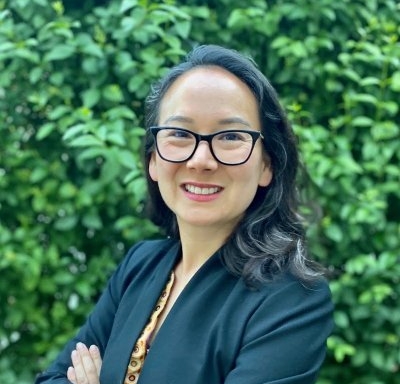Major League Baseball pitcher Joaquin Andujar once famously offered this pearl of wisdom: “I only have one word to say: Youneverknow.”
He’s right. Youneverdo. Especially, right now, in this unique, frustrating, tumultuous and chaotic year. Decades from now, we will tell young people about 2020 and they won’t believe us.
Anyway, we’re hours away from the first election results and, in the end, no one knows what will happen. Including me. Still, as a designated pontificator, I’ll offer up my best guesses. Then, I’ll add a little more about why this election, perhaps more than any other, is the most unpredictable at every spot on the ballot.
BUT FIRST, A SLIGHT DETOUR: And the first thing I’m going to do is back off on the rhetoric about unpredictability. There are some things we know.
Joe Biden will win the Peninsula, the Bay Area and the state. It is, as they say at the sports books, a mortal lock. The only question is whether his total will be at 70 percent.
All that I’ve learned about politics in more than 40 years reporting on it at the national, state and local level also tells me that Biden will win big, perhaps a landslide and that it will be abundantly clear on election night. Still, the specter of bad polling in 2016 looms over any prediction that can be made and sows deep doubts about any judgment. As Congresswoman Anna Eshoo said to me the other day, “I feel like I’m driving around with the emergency brake on.”
Still, as I started to say before I interrupted myself, there are some sure things: Congresswoman Jackie Speier will get 70 percent in her re-election campaign because she always does and there’s no reason to think otherwise this time. Eshoo should hold off the frantically weird challenge from Democrat Rishi Kumar. And Josh Becker will win the 13th Senate District seat with similar ease, an outcome that was guaranteed when he drew a Republican opponent out of the primary.
ON THE LOCAL BALLOT: Back to my best guesses. Let’s start with Redwood City, not only because it’s the city’s first foray into district elections, but it’s also what I get paid to do. Yes, I get paid. Sometimes I just have to pinch myself.
For all the hoo-ha that attended the City Council’s tortured path to new districts, it looks as though the three contested seats are going to go to two incumbents and a pseudo-incumbent.
In District 1, Redwood Shores, Jeff Gee has been off the council for only two years. He raised the most money, had the deepest roots in the district, and, it could be argued, has been working the Shores for decades. There are definite anti-Gee (zero G?) forces in Redwood City, but district elections have diminished their impact. Planning Commissioner Nancy Radcliffe ran a credible campaign, hampered, perhaps, by her having moved into the district only a little while ago. Gee is a virtual incumbent, and voters need a compelling reason to vote out someone they have elected before. This race was never about that.
In the other two races, the same political reality prevails – two incumbents and no compelling groundswell of dissatisfaction about either of them that could be harnessed into an upset defeat. And, yes, I know neither Janet Borgens nor Alicia Aguirre is technically an incumbent – each was elected citywide and now they’re running in districts under the label “councilmember.” But this is a political column and, in that context, they have all the advantages of incumbency. Each of them could have faced difficult challenges because of the move to district elections. That’s not how it has played out.
District 3, Friendly Acres, where Borgens is running for re-election, is one of two new majority-minority districts, 70 percent Latino. She could have drawn a well-established, well-known Latino opponent who might have mobilized the community. But the reality is the historic political disenfranchisement of this part of town meant there was no bench of high-profile challengers from the Latino community. Absent that, Borgens’ long and deep ties to this district should see her through. She did draw two of the most interesting opponents. Isabella Chu, a leader of pro-growth Redwood City Forward, turned the usual campaign rhetoric on its head and advocated more height, more density and in more places. There was a fearlessness about this all-out, all-in campaign. Lissette Espinoza-Garnica was just as forthright as the most progressive candidate on any ballot in the county. Espinoza-Garnica’s affiliations with labor, the LGBTQ community, the Latinx community and the Democratic Socialists aligned with Bernie Sanders resulted in a competitive campaign treasury. Espinoza-Garnica could finish second in this race.
District 7, Farm Hills, is another example of the consequences of district elections. Aguirre is the only Latina on the council, and she lives in a district that is 70 percent white. In former community police officer Chris Rasmussen, Aguirre drew a more classic opponent – someone whose work made him a high-profile figure throughout the city. Rasmussen has ties to a core group of residents unhappy with a changing city, and who are credited with the defeat of another incumbent a couple of elections ago. Aguirre’s low-key style also made her appear vulnerable.
Rasmussen started fast and Aguirre started slow. He was up early with campaign signs, he raised a healthy campaign treasury, and he was active online, posting a particularly impressive life-story video that was notable for the passion he holds for the community. But Aguirre has been on the council since 2005 and has built deep and close ties to the county’s leading political figures. She won the endorsement battle going away and she raised a wholly competitive amount of money. Her own campaign message was that the city needs experienced leadership at this moment of multiple crises. Rasmussen’s message that it’s time for new leadership seems to have gotten less traction in this district. Mark Wolohan, the third candidate, has been a fresh and earnest voice in the district and demonstrated a grasp of key issues and some new ideas about how the city should go forward. But he self-funded his campaign and raised no money. In a non-pandemic environment, where candidates could directly engage voters, it might have been a different campaign for Wolohan’s decidedly outsider approach, but this is the season we’ve been given.
SAN MATEO: It says here that first-term incumbent Diane Papan should win and be the top vote-getter in a three-candidate race for two seats. A late infusion of independent expenditures on Papan’s behalf probably helps seal the deal. The race between appointed incumbent Amourence Lee and Lisa Diaz Nash is a tossup. The sense of it is that Nash comes out on top, also aided by more than $30,000 in late, independent money. If Lee loses, it looks like it will be because Nash was able to marshal the forces that are unhappy with a changing San Mateo. But Lee is a new face from an historically underrepresented part of town and she could benefit from a wave of new voters showing up this year because of the presidential race.
There are two ballot measures, R and Y, addressing height limits in San Mateo – Y put on by initiative and R by the city council. I think both are going to lose, putting the issue back in the hands of the city council. Really, that’s where this kind of complex land-use policy decision should be made. Thirty years ago, the first height limit was a reaction to a city council that had approved a massive project on El Camino, “going off the rails,” as one long-time observer said. The city is different, the electorate is different and the council has a dramatically different sensibility about reflecting a community consensus.
ELSEWHERE: The Caltrain sales tax measure, RR, must be close in private polling if San Mateo County Supervisor Dave Pine thought it worthwhile to loan $500,000 of his own money to the Yes campaign at the last minute, sending a meaningful signal to some late, big-bucks donors. I think it wins, getting 67-69 percent of the vote. … At the San Mateo County Community College District, where three seats are being contested, John Pimentel should win over Lisa Hicks-Dumanske, aided considerably by a campaign that will exceed $200,000, almost all of it his own money. Lisa Petrides should win her race against Eugene Whitlock, who dropped out of the race amid lingering controversy over his $2.3 million settlement against the district. Still, he remains on the ballot, which means he could win, which would be both weird and would invite months of litigation. Incumbents Maurice Goodman and Dave Mandelkern are running against each other and it looks like Mandelkern should win, if only because he’s a more frenetic campaigner. … In Millbrae, incumbents Gina Papan and Ann Schneider should win but the race for a third seat clearly is between Anders Fung and You You Xue and it’s impossible to call that one. It has been nasty with a wave of campaign complaints filed by a Xue campaign aide. … In Belmont, incumbent Davina Hurt and appointed incumbent Tom McCune should win easily. The group of Belmont residents who dominated city politics for many years keep looking for someone to break the hold of the current majority, but it’s a different era now and it may be time to move on.
I COULD GO ON: But honestly, there are just too many races to track effectively. And all the preceding notwithstanding, this year is the most unpredictable since Harry Truman defeated Thomas Dewey in 1948, when San Mateo County’s population was about 235,000. To give that a little perspective, according to the most recent report, there are 440,005 people registered to vote in Tuesday’s election in San Mateo County.
And that last number is why this election is so up in the air, particularly at the local level.
The current registration is nearly 20 percent higher than the 2016 presidential election. Data analysts say the biggest jump is among young voters, minority voters and people who simply didn’t vote in 2016. In other words, it is an electorate of new voters, which means that their voting habits are untested. Incidentally, San Mateo County’s registered voters are 54 percent Democratic, 26 percent who express No Party Preference, and a paltry 14 percent Republican.
At the same time, local elections have been merged with statewide elections. As I’ve referenced throughout this column, there will be thousands of voters who are showing up at the polls– waiting four years to run to the polls – to vote in the presidential election. How will they vote? No one knows. They are not steeped in local elections. By the time they get to the bottom of the ballot there will be more than a few shrugs.
The best guess is that they will tend toward incumbents unless they’ve been given a compelling reason to oust an incumbent. Really, none of these races has been an all-out attack on an already-vulnerable incumbent.
While there may be significant upheaval at the national level, here at home, even as change continues to sweep across the Peninsula, it looks like the status quo will hold for one more election.
*The opinions expressed in this column are the author’s own and do not necessarily reflect the views of Climate Online.






